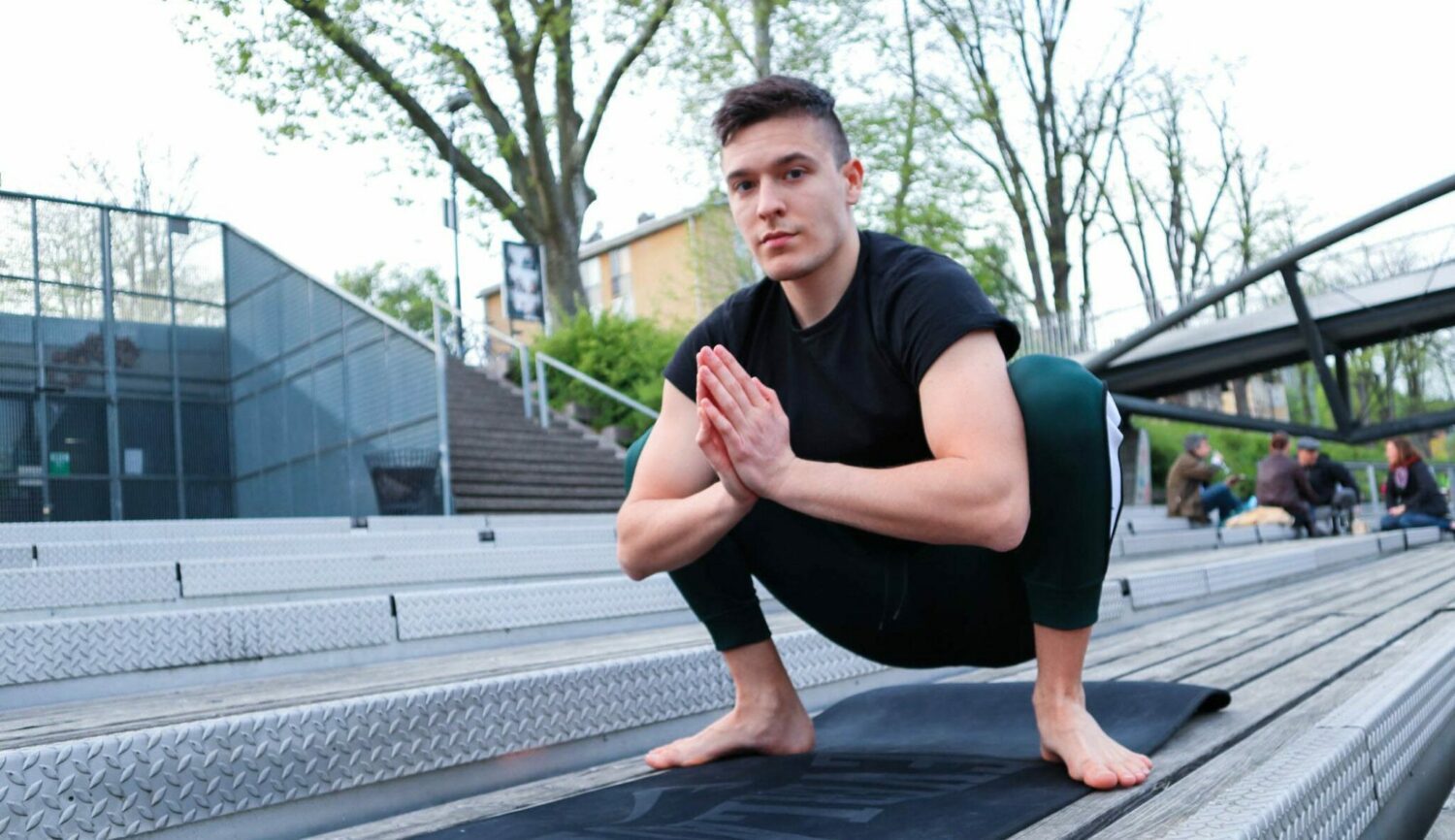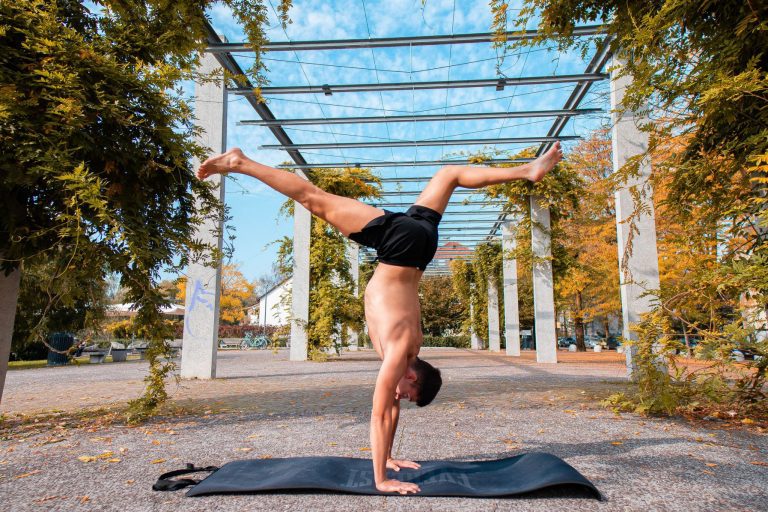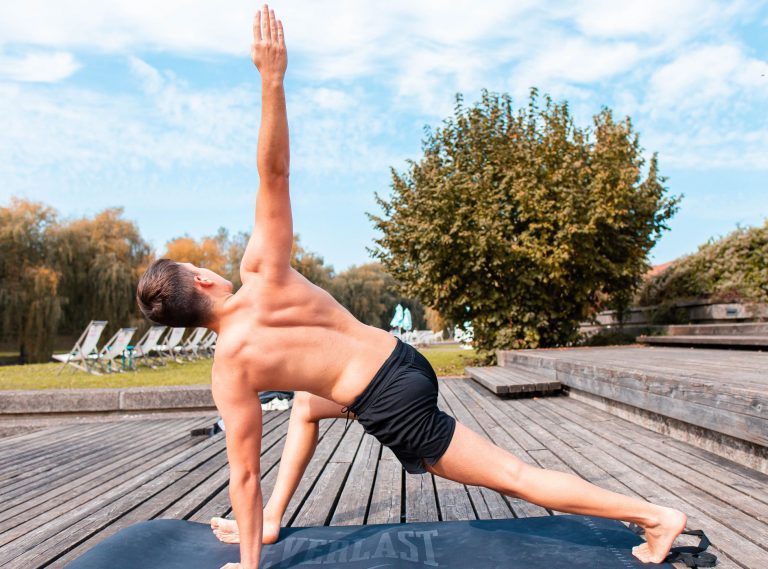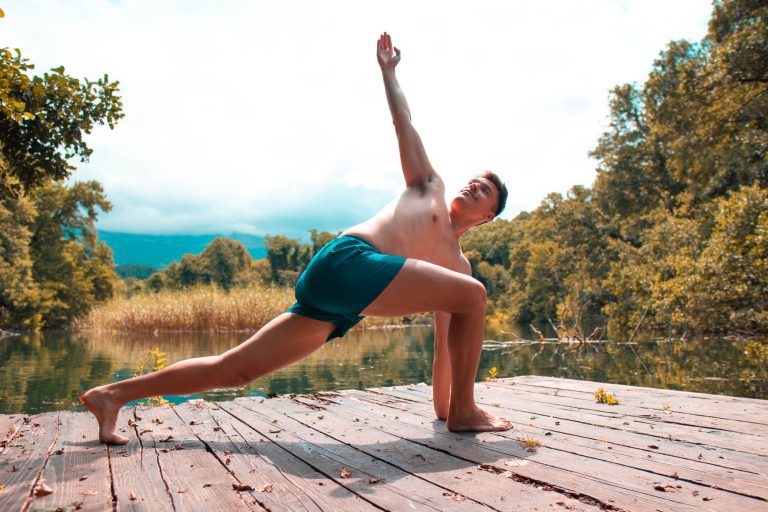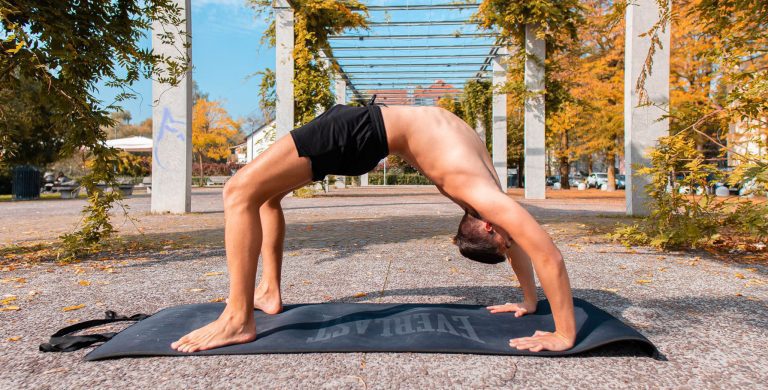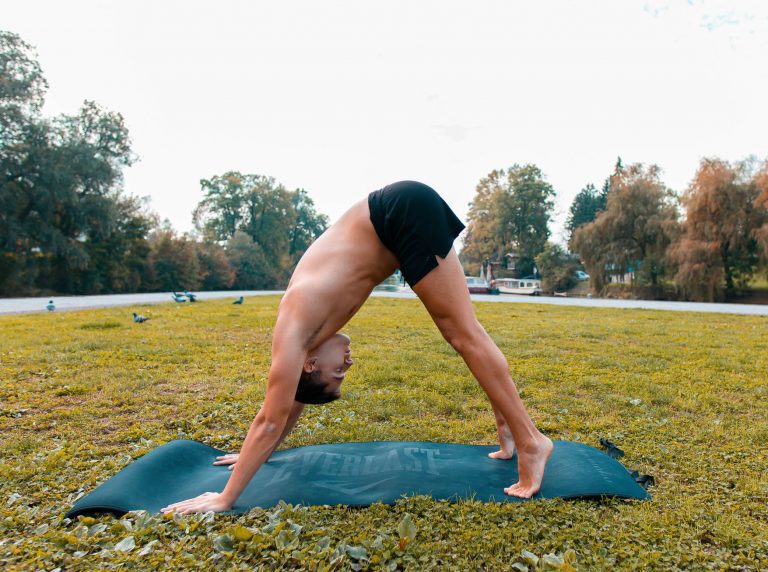Yin Yoga Style 101 | Restorative Yoga For Flexibility
Yin Yoga Style
Yin Yoga style is a passive, slow-paced type of yoga based upon the Yin Yang philosophy. Characterized by longer duration held poses, this Yoga style is known to improve flexibility and joint mobility.
It is meant to bring peace and awareness, create space for self-care and introspection while calming the nervous system, reducing stress & anxiety.
It is the ultimate practice made to open up the meridians or energy channels in the body, allowing the chi energy to flow freely. Yin Yoga practice can therefore bring positive change in our everyday life, by enabling the individual to resist temptation and observe his desires. It enables individual to sit longer in meditation and practice pranayama.
Origins of Yin Yoga
Paulie Zink is the creator of Yin & Yang Yoga, which in today’s world, we call Yin Yoga. Zink taught Yin Yoga in North America in 1970’s.
He was Taoist Yoga teacher and martial art expert. Inspired by hippies practicing a modern form of yoga in Hollywood streets he started learning and practicing for himself. Soon enough, he developed a full practice, a combination of Hatha and Taoist Yoga to enhance flexibility of his martial arts practitioners who developed tight muscles.
Long stretching is also linked to health, well-being and longevity. Principle of Taoist alchemy is practiced in order to raise the five elements contained in our energy field: earth, metal, water, wood and fire, which represents qualities as: calm, strength, fluidity, springiness and lightness.
Teachers of Yin Yoga
Paul Grilley and Sarah Powers are continuing Zinc’s yoga practice and spreading it out in the world. This practice has reached to Europe and Asia. Grilley studied anatomy, developed his own Yin Yoga style.
He improved his knowledge through following Motoyama Hiroshi, who was interested in the meridian or energy channel system and he studied chi energy flow, concepts of Nadi pathways and chakras. Grilley, inspired by him, developed his sequence, made for energy flow through the body.
His main goal being energy flow, similar to the work of an acupuncturist. Sarah Powers developed her own unique style of Yin Yoga which combines Buddhist psychology to it, while offering systematic breathing technique. Creating a practice which leads on our path toward awakening or enlightening.
Restorative Yin Yoga (Slow-Paced)
This yoga style offers longer holding of stretching poses. Training by itself is structured for frustration and perseverance. Beginners hold poses for 45 second to two minutes, while advanced practitioners can hold pose for five minutes. This slow stretching will allow your connective tissue to loosen up, therefore improving flexibility and mobility. The slow pace does not create much heat in the body but definitely allows relaxation.
Push past frustration
Yin Yoga practitioners will definitely find the edge here. Staying in a stretching pose for longer duration makes us feel like we want to get out of the pose. Pushing past this frustration or anger is beneficial in everyday life temptations. Once we are able to break past that monkey brain chatter, we can allow to choose what is best for us on the long-term. Acceptance of pain brings new understanding of oneself, leaving you less stressed and more peaceful after each session.
Yin & Yang philosophy and asanas
The concept of dualism, representing the complementary nature of opposite forces is known in Ancient Chinese philosophy is Yin & Yang. In this yoga style this can be translated into the asanas.
Yin represents stability, moon, passiveness, feminine and cold. Yang represents movement, masculinity, sun, heat, energy and activity. In the Yin asanas this is translated the same. There are long held, passive stretching poses and this is the Yin.
There are moving transitions, to energize and flow known as the Yang. Even though we see different styles of Yin Yoga teachings, the original form where it originated from had some flowing transition. Today’s modern Yin Yoga concept trained in North America and Europe is mostly applying the passive “Yin” principle, including 18-24 asanas.
Beside those qualities and characteristics, Yin represent passive anatomical structure like connective tissue, ligaments, tendons and fascia and Yang represents movement like blood, energy and muscle tissue.
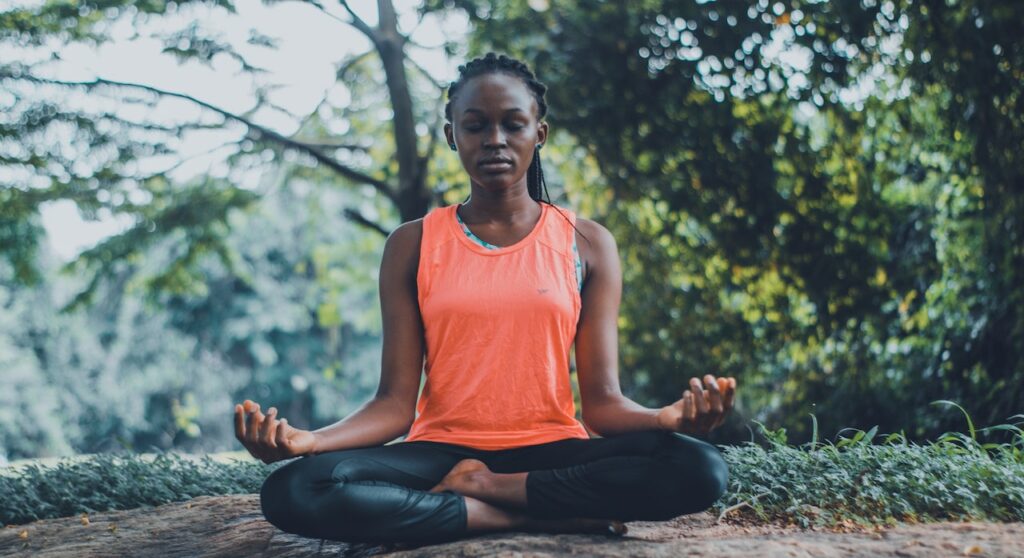
Yoga for Flexibility & Fascia conditioning
Yin Yoga approach offers improved flexibility and mobility, especially in the lower body, hence why it is known as one of the more “yoga for flexibility” focused approaches. In order for this to be achieved moderate stress must be applied to our connective tissue.
Connective tissue is made up of fascia, tendons and ligaments. Fascia is a sheet of fibrous tissue, made mostly out of collagen. It attaches, separates or stabilizes internal organs and muscles. Difference between tendons and ligaments is tendons attach bone to muscle and can withstand tension, while ligaments connect bone so bone and are part of musculoskeletal system which cannot regenerate naturally, without stem cells.
To enhance muscle flexibility, we can do it through more dynamic movement and internal heat while connective tissue requires staying in stretching poses for longer duration.
Yin Yoga cautions: Hypermobility
Practitioners must reassure that their teacher has the needed experience and education level to teach. Yin Yogis must know anatomy and connective tissue conditioning at a higher level.
They must understand, practice and feel their bodies first, so they can teach. Proper posture is crucial in Yin Yoga. Alignment is the key to reap maximal benefits without increasing risk of chronic or acute pain and injuries.
Proper alignment serves to save you from overstretching and developing hypermobility, which is the ability to achieve higher than normal range of motion and can be detrimental to your joint stability and overall physical health.
Practitioners must be advised to bring their awareness to their body, feel the pain and each connective tissue stretching. To tune in the practice and listen to their bodies, there are sensation of stretching, which is allowed and there is tingling, pricking, numbness and sharp pain which we must differentiate and immediately leave the pose.
Meditative approach, inner silence
One of the main goals of this practice is to enable one to seat longer in a pose which allows for longer pranayama practice or meditation. Yin is passive yoga style which can help us tune in, increase awareness of our body and connective tissue. It is more like pushing through frustration than pushing through pain. Resisting temptation is bigger challenge than we might think, especially in this busy, disconnected, full of distractions world. Yin practice will then enable one to develop self-discipline, intimate relationship and awareness.
Energy flow through meridians
The level of energy a human has and its sustainability correlates with how open our meridians are. Open meridians will allow flow of life-force or qi energy throughout our body. Human meridian system consists of twelve primary and eight extraordinary channels. When blocked this channel does not allow free energy flow and this negatively affects our mental, physical and spiritual well-being.
On physiological level it is seen as improved circulation, detox and toxin flush-out and nourishing our internal organs and connective tissue, bringing fresh oxygen and nutrients. It is about directing that energy through our chakras and releasing energy blockages.
Release tension
The Yin nature of this training is characterized by feminine or lunar energy, cold and passive stillness allowing introspection which improves our self-knowledge. Just as on a physical level stretching does release a lot of tension from our body, it can allow to quiet the mind, free from distractions and allow acceptance of frustration and anger leading us to a new, higher state of consciousness and acceptance.
Teachers dharma talks
In Yin Yoga the teacher usually talks while practitioners hold certain poses for longer duration. To enrich the experience, teacher is talking about physical change, adaptation or conditioning from anatomical or physiological perspective. They also hold monologues about different Buddhist stories, traditional Chinese poetry or reflection of their own experience. Opening up the meridians and letting energy flow through the channels is also common.
Overcoming addiction
Through resisting temptation, not letting yourself get out of a pose that is uncomfortable, we develop self-discipline. To resist through the rise of anger and frustration builds perseverance, allowing you to ditch short term satisfaction related to dopamine and think more on long term benefits related to serotonin. Yin can also affect mental stability, mental endurance and stillness while relieving symptoms of anxiety, panic attacks or depression.
Yin Yoga benefits:
- improves energy flow through our meridians
- improves muscle and connective tissue flexibility
- improves joints mobility
- decreases anxiety & depression symptoms
- enables us to build perseverance and self-discipline
- teaches us to be present and grateful
- hormone balancing through internal organ and gland nourishment
- builds confidence and self-trust, power over addiction
- mind-body connection, allow intimate relationship
- affects body awareness and mindfulness
- relax our nervous system, activates parasympathetic
- restore and improve range of motion
“We don’t use the body to get into a pose, we use the pose to get into the body.”–Bernie Clark
conclusion
Yin Yoga is one of the most popular passive Yoga styles, after which we are left feeling relaxed and rested. Yin yoga includes longer-held poses and static stretching, which is one of the best ways to release tension. It is a great style for anyone looking to work on themselves, calm down and relax the nervous system. While it is closer to Meditative experience than other styles, from physical perspective it offers benefits such as improved flexibility and mobility.

